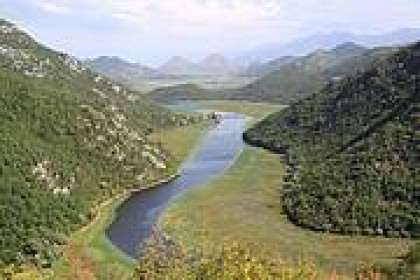
December 2014
 | December 2014 |
Threatened freshwater biodiversity sites identified in the Mediterranean | |
|---|---|
 Out of the 167 freshwater Key Biodiversity Areas (KBAs) identified, mapped and validated throughout the Mediterranean region, 75 per cent were found to lie outside the boundaries of any existing protected areas or other KBAs, according to the main results of an IUCN assessment revealed at the IUCN World Parks Congress held in Sydney, Australia (12-19 November 2014). An estimated 70-75 per cent of the world's inland wetlands, along with many of the freshwater species that live in them, have been lost in the last 100 years. Freshwater biodiversity is poorly represented within protected areas, which are a critical tool for the conservation of these habitats. There is an urgent need to identify critical sites of freshwater biodiversity in order to develop a more representative protected area network for freshwater species. The new assessment coordinated by IUCN has laid the foundations for such a network in the Mediterranean basin hotspot, a region rich in highly threatened freshwater species. IUCN reveals that at least 167 sites in the Mediterranean basin qualify as freshwater Key Biodiversity Areas, covering a total area of 302,557 km2. Forty of these KBAs also meet the criteria qualifying them as Alliance for Zero Extinction (AZE) sites, representing some of the last remaining refuges for one or more Critically Endangered or Endangered species. ‘Through this project we are putting freshwater biodiversity on the map in a region of the world where pressures on inland wetlands are rapidly driving species to the edge of extinction-a number have already been lost. The next crucial step is to build widespread awareness of these important sites and to stimulate targeted conservation on the ground,' commented Will Darwall, manager of the IUCN Freshwater Biodiversity Unit and project coordinator. ‘KBAs are fragile freshwater ecosystems which must be properly managed as part of Integrated River Basin Management planning, accounting for the wide range of uses of water across sectors,' said Jörg Freyhof, European chair of the IUCN/WI Freshwater Fish Specialist Group and co-author of the report. The project was funded by the Critical Ecosystem Partnership Fund, the MAVA Foundation and the Spanish Agency for International Development Cooperation (AECID), with contributions from the European Commission funded Biofresh and the National Parks Autonomous Agency (OAPN) of the Spanish Ministry of Agriculture, Food and the Environment.
Photo: An inlet on Lake Skadar, Albania and Montenegro. This large Mediterranean lake and its associated catchment is a freshwater Key Biodiversity Area (KBA) supporting at least 24 species of threatened or restricted-range freshwater species. © Geert De Knijf | |